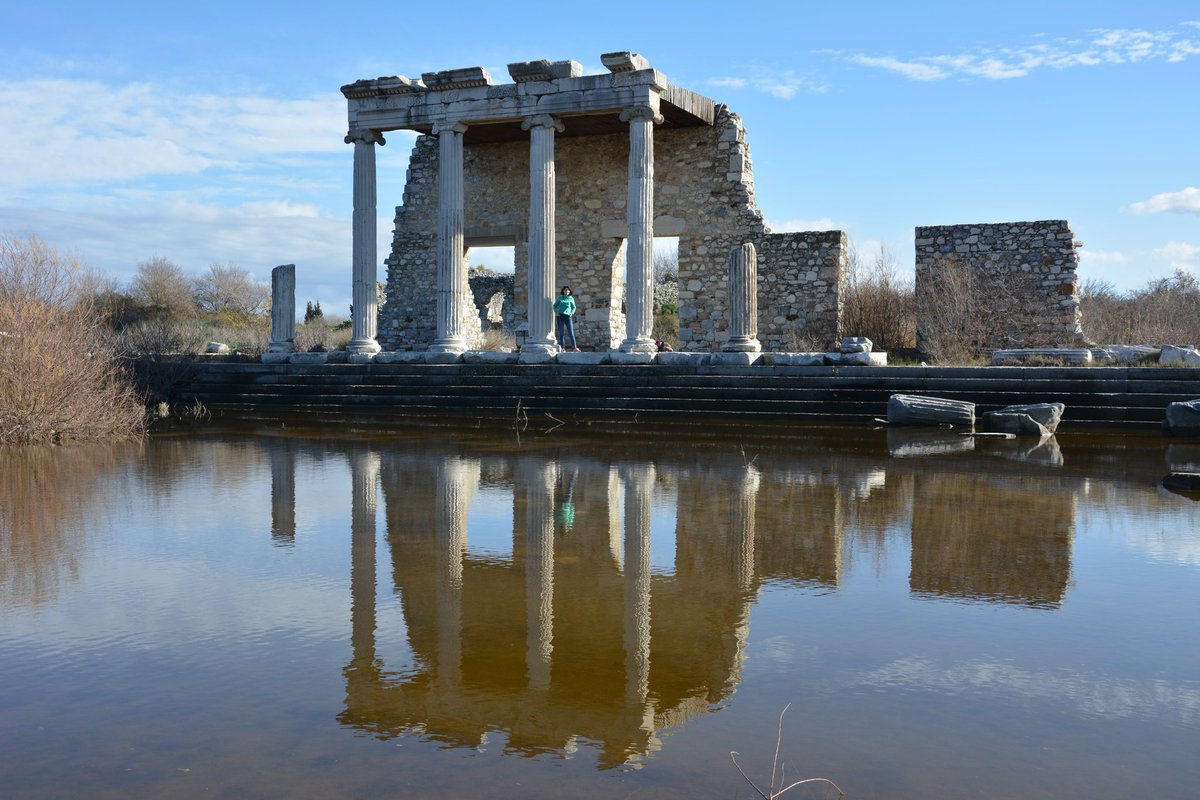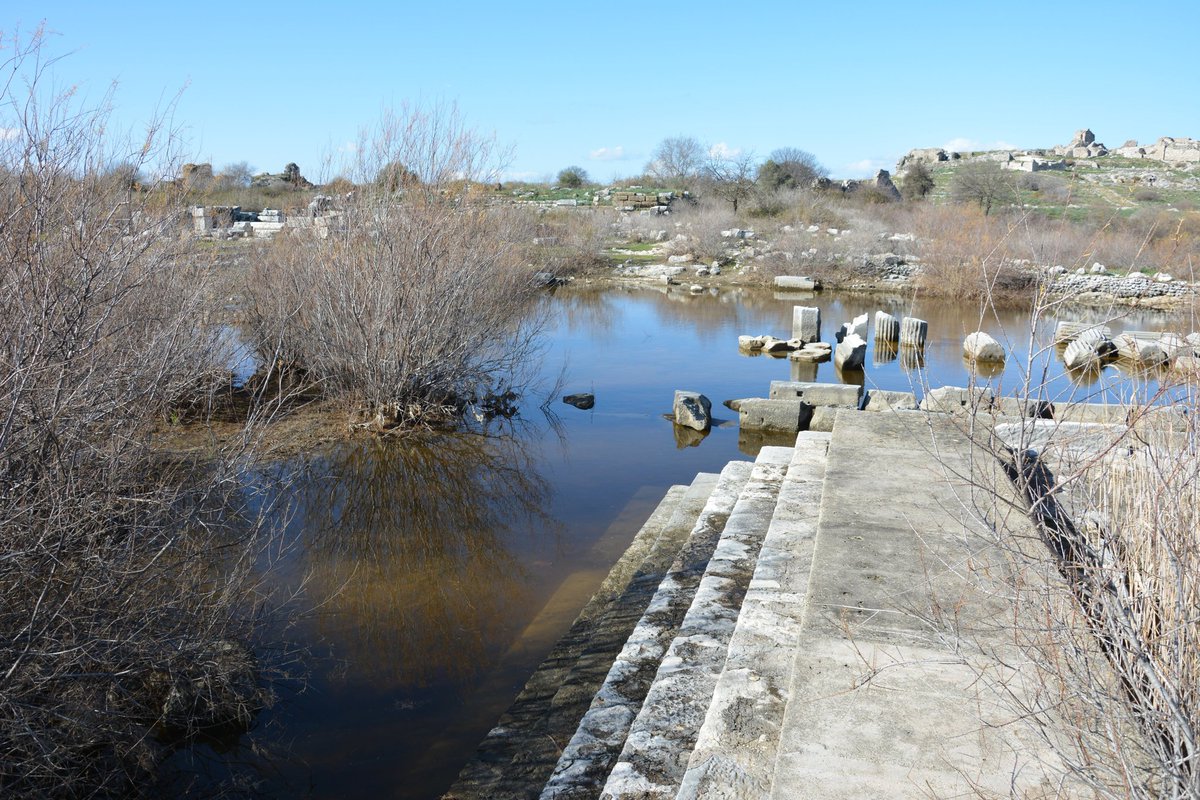The Ionic Stoa on the Sacred Way, #Miletus.
Miletus was one of 12 Ionian cities and one of the greatest cities of ancient Asia Minor. It was large trade center with 4 harbors; founded colonies on Black Sea, in Egypt and Italy; noted as a literary center and known as -
the birthplace of the Hagia Sophia's architect (and inventor of the flying buttress) Isidore of Miletus and Thales, a pre-Socratic Greek philosopher (and one of the Seven Sages of Greece).
The city reached its greatest wealth and splendor during the Hellenistic era (323–30 BC) and later Roman times.
The Stoa was built in front of the Hellenistic Gymnasium (of Eudemus?) and the Capito Thermae, on a north to south axis. It measured approximately 100X14 metres.
Its facade included an oblong Ionic colonnade with 35 columns that stood on a high crepis consisting of seven steps and supported an entablature with a richly decorated frieze.
The architectural order of the Stoa's faces gave a pronounced Ionic character to the Sacred Way and therefore to the centre of Roman Miletus.
The construction of the building dates from the period of the Flavian dynasty (69-96 AD), while some alterations were carried out in the years of Emperor Trajan (98-117 AD).

 Read on Twitter
Read on Twitter



